I grew up eating homemade Dulce de membrillo or quince paste, a flavor I love. Here in the USA, you can buy quince paste from the Goya brand or import from Spain or other countries, and it is ok, but it does not have the same texture as homemade.
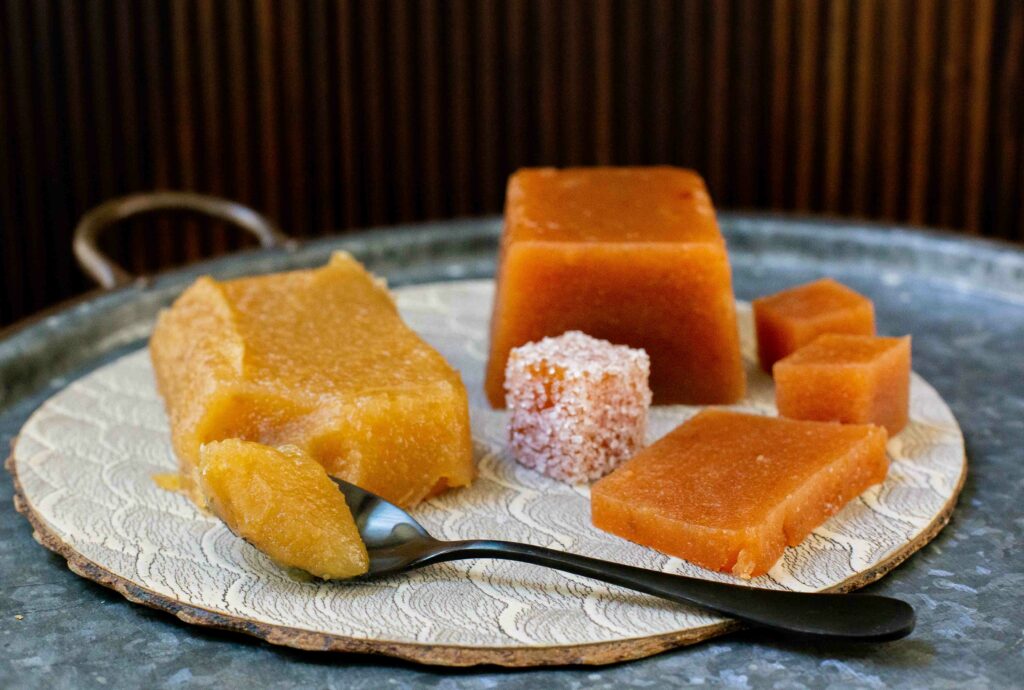 The industrial paste is generally more homogeneous and smooth; the homemade has more texture; you can feel the essence of the quince. If you want a smooth homemade quince paste, pass it through a fine sieve.
The industrial paste is generally more homogeneous and smooth; the homemade has more texture; you can feel the essence of the quince. If you want a smooth homemade quince paste, pass it through a fine sieve.
The color is another consideration. If you use ripe or banged-up quinces, the color inside is darker reddish because the fruit's meat has oxidized by contact with the air. I recommend using not very ripe quinces to achieve a better taste, which also suffers from oxidation.
Another critical point is that quince naturally has a lot of pectins. So, take out half of the seeds before cooking so you don't end up with a stiff paste.
Why my quince paste is not turning red?
Patience: your starting quince puree will be yellow, but thanks to the slow caramelization, it will change color to the traditional reddish-brown, and the flavor will improve.
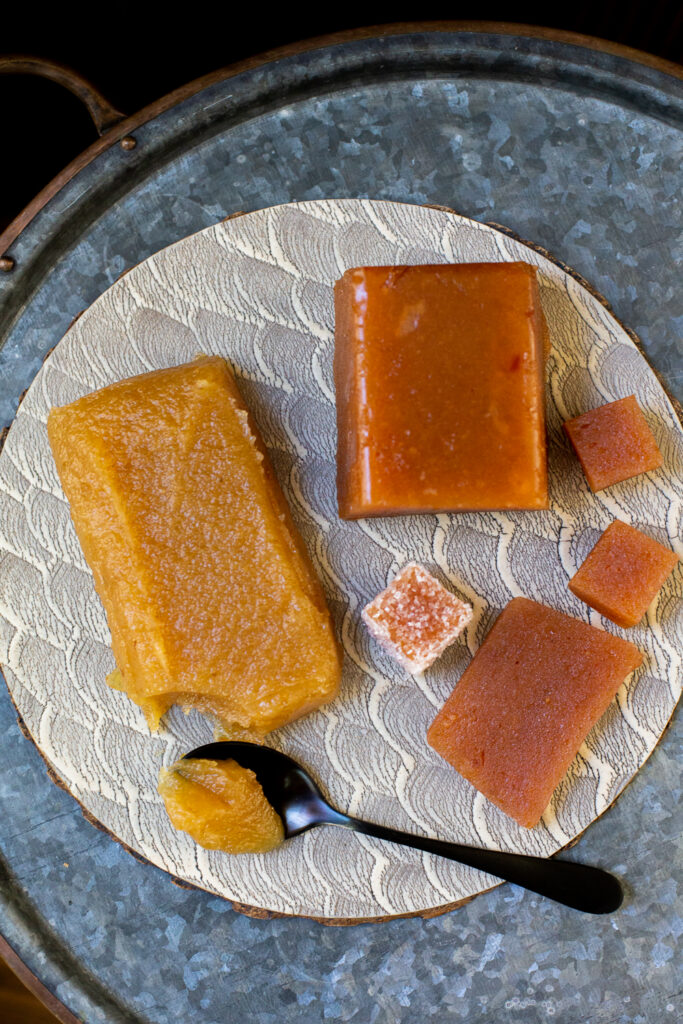
Is quince paste an excellent way to preserve quince?
Yes, it keeps for a long time, like many jams. The sugar-quince ratio is for each kilo of cooked quince pulp. Add 750 grams of granulated sugar. You can freeze quince paste for up to 3 years.
What do I do with Dulce de membrillo?
The most common way to eat it in Chile is on toast (like jam) at breakfast. My other favorite uses are on apple strudel (add a thin layer of the paste before adding the apples), with cheese on a board, or as sugar-dusted candy.
Can I eat quince raw?
Yes, but it is very tart. Quince is seldom eaten raw with salt in Chile.
You may also be interested in the recipe: Dulce de Alcayota Chilean Spaghetti Squash Preserve.
Print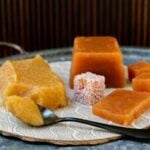
Dulce de Membrillo Quince Paste
- Prep Time: 20 minutes
- Cook Time: 2 hours
- Total Time: 2 hours 20 minutes
- Yield: 2 pounds
- Category: Sweets
- Method: Stove
- Cuisine: Chilean
Description
A traditional Chilean sweet treat.
Ingredients
- 6 quinces (a little more than a kilo or 2 pounds)
- 750 grams of granulated sugar
Instructions
- Wash the quinces very well. Remove all the hair by rubbing with a sponge. Cut each quince in 4 and remove the seeds of half of them. Do it one by one and place them in water immediately.
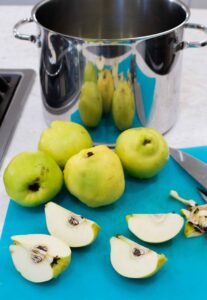
- Place the quinces in a pot and cover with the minimum amount of water possible. Cook; once it boils, reduce heat and simmer for 20 minutes.
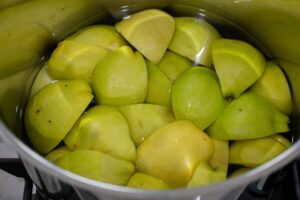
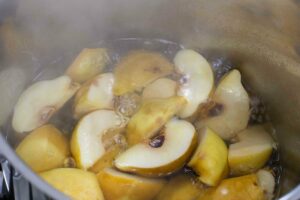
- Drain. Let cool for 10 minutes and then remove the rest of the seeds, and in the food processor or blender, make a puree (do not add water).
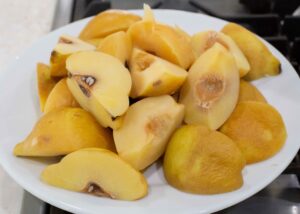
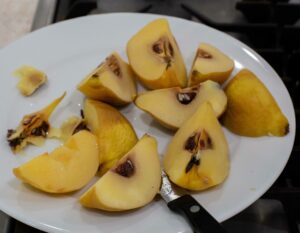
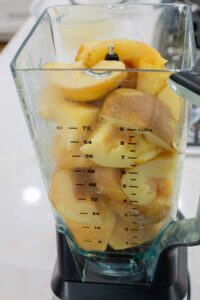
- Weigh the puree and calculate the sugar. Place in a large pot with high walls to minimize the risk of burns.
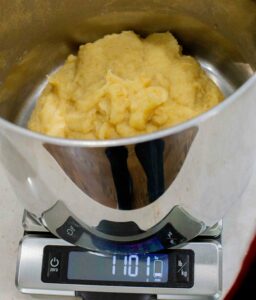
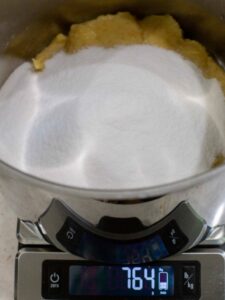
- Mix and cook over medium heat, stirring. Once it boils, lower the heat to a minimum, and cook for 15 minutes, stirring. At this point, it will still be yellow and a quince jam, spreadable.
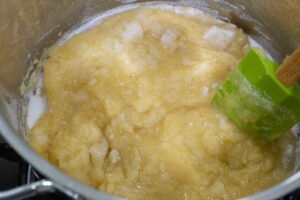
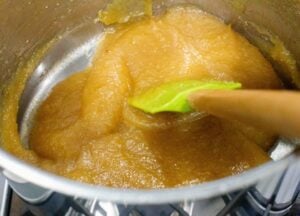
- Move to your smaller plate with minimum heat if you want a reddish firm paste. It should not bubble. Let cook for 1 hour and a half to two hours until it changes color. Stir every 5-10 minutes so it doesn't burn.
- Transfer carefully to a pan covered with silicone paper. Let dry overnight. Unmold and keep refrigerated.
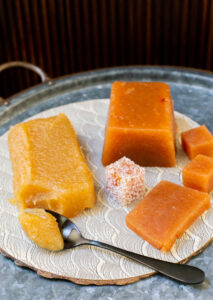
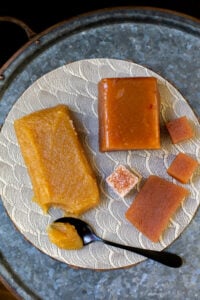
Nutrition
- Serving Size: 1 tb/cucharada/20 gramos
- Calories: 70
- Sugar: 15 g
- Sodium: 1 mg
- Fat: 0 g
- Saturated Fat: 0 g
- Carbohydrates: 18.1 g
- Fiber: 0.4 g
- Protein: 0.1 g
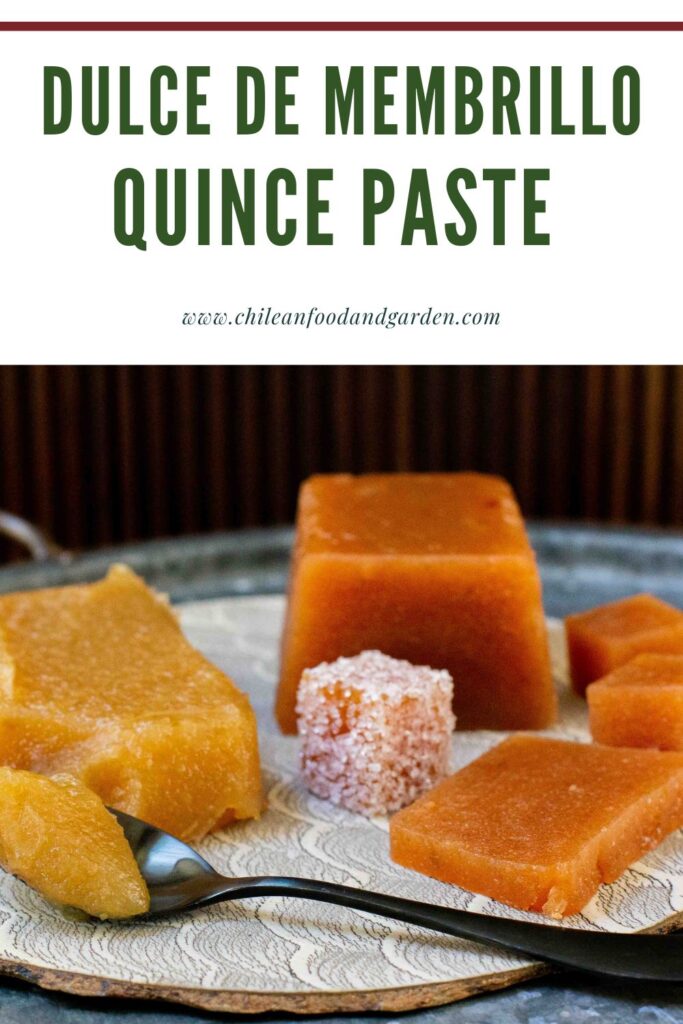

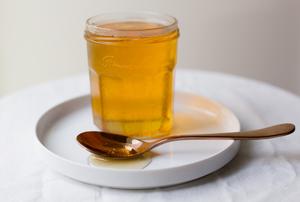
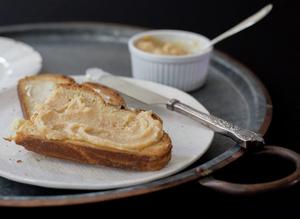
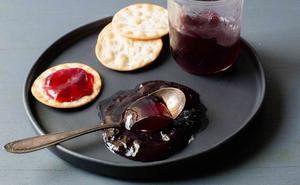
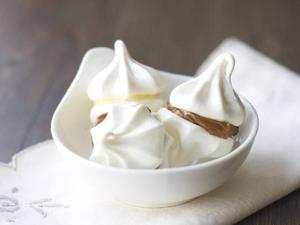
Alicia says
Great recipe!